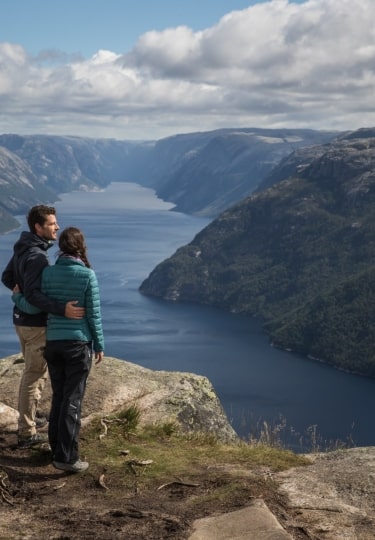The best time to visit Norway and explore its lush countryside, tumbling waterfalls, and long, sunny days is summer, from June to August. But Norway is so abundantly blessed with natural beauty that there’s really no bad time to visit.
Visiting Norway by Season
Summer
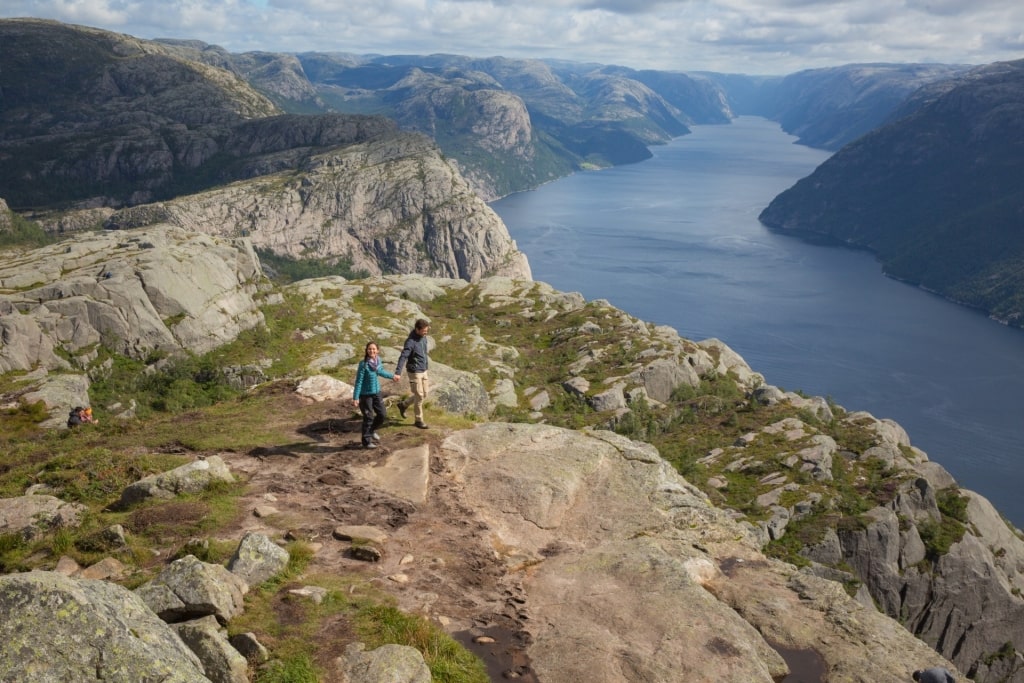
Pulpit Rock, near Stavanger
Norway is a long, skinny country stretching from 57° to 78°of latitude, so you should expect different temperatures according to where you are.
In Oslo, the capital, average temperatures in July, the warmest month, are around 64.5°F (18°C), although it can get much hotter. Above the Arctic Circle, summer is considerably cooler, with averages in July of 54.5°F (12.5°C).
Midsummer—June 21—is the season of White Nights, when the sun sets very late at night, close to 11 pm, and dawn breaks before 4 am. North of the Arctic Circle, the sun doesn’t set for all of June and most of July.
The atmosphere is energetic during summer, when people embrace the outdoors, hiking, camping, kayaking, enjoying festivals, and even swimming in the fjords.
Fall
Temperatures decline quickly in fall. Oslo’s average is just 35°F by November, or 2.2°C. Early fall is a good time to visit for the blazing colors of the fall foliage, but come earlier, in September or early October, as the first snow can fall in October. Winter begins early in Norway.
Winter
The Gulf Stream warms Norway’s long west coast, so the sea never freezes here. Winters, although snowy, are nowhere near as bitter as in other places at the same latitude. The coast is usually warmer than the interior.
Come in winter and you’ll find snow on Norway’s mountains, and usually right down to the shoreline. Above the Arctic Circle, the days in December are short; for all of December and half of January, the sun doesn’t rise above the horizon, and the only daylight is a soporific, blue-ish half-light.
Temperatures in Oslo hover around or just below freezing point in January, with Tromsø in the north a couple of degrees lower.
Spring
Late spring is the best time to go to Norway for relatively low rainfall. By May, the average temperatures in Oslo are around 53°F (11.7°C).
Wrap up warm for hiking; there’s still plenty of snow on the mountains and you need to be prepared for cool weather. But the scenery is gorgeous—Norway’s waterfalls are in full flow as glacial meltwater fills the rivers and the meadows are carpeted in wildflowers.
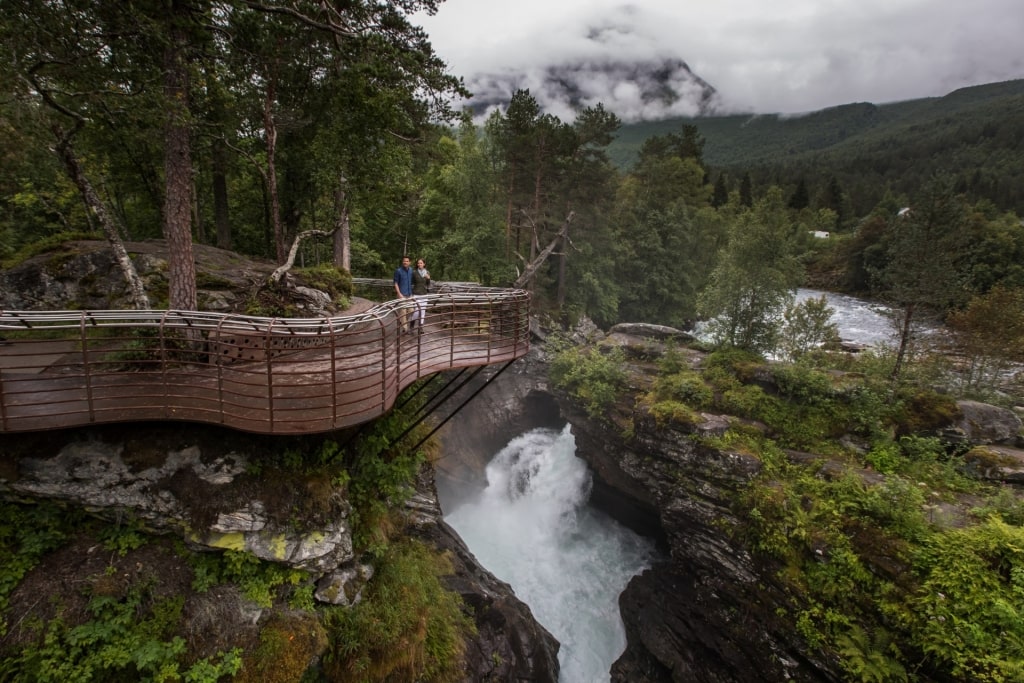
Gudbrandsjuvet waterfall, near Alesund
When Is Rainy Season?
Rainfall varies according to where you are in Norway, but October to January is the wettest season. October is the rainiest month in the north, with an average of 4.9 inches or 125mm.
May and June have the lowest rainfall, but could still experience precipitation on 10 or 11 days of each month.
The south has lower rainfall than the north, but June to November is the wettest time of year; in August, Oslo could experience four inches or more of rain (105mm).
If you get caught by a wet spell, there’s no shortage of things to do indoors, as there are excellent museums and galleries in the capital.
Essentially, you should be prepared for all weather conditions at any time in Norway, often with the sense of several seasons in a single day. As the locals say, there’s no such thing as bad weather, just bad clothing.
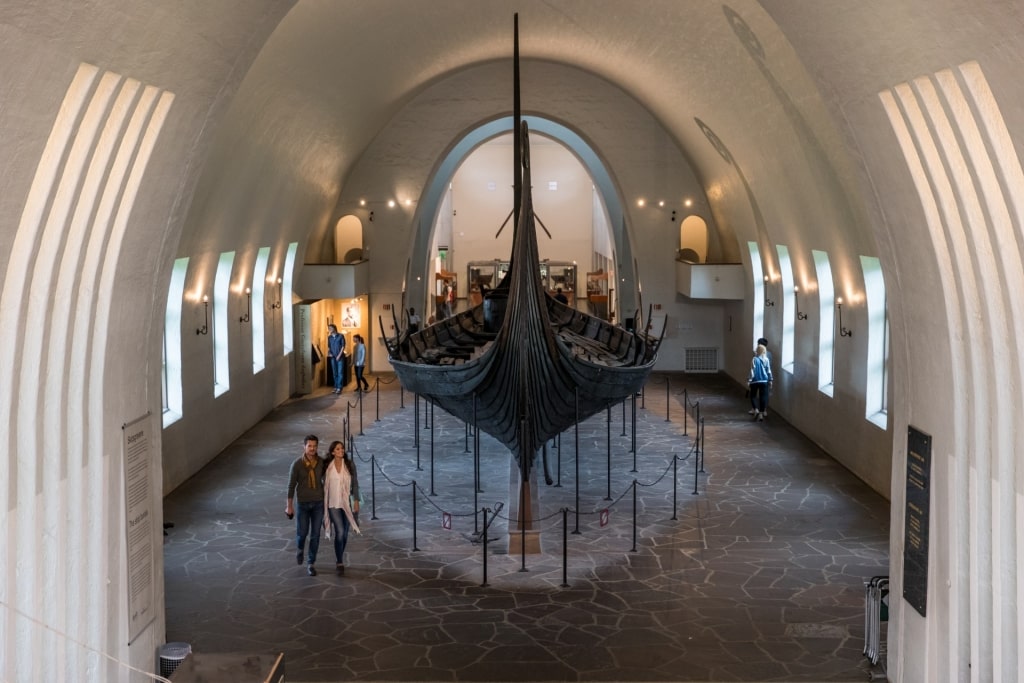
Viking Ship Museum, Oslo
When Is High Season?
The best time to go if you’re headed for Norway’s fjords and the Arctic is June, July and August. This is considered the high season because of the relatively balmy temperatures, low precipitation, and the midnight sun.
Though this is the busiest time, nowhere in Norway ever feels packed, as there’s so much coastline to visit and vast swathes of wilderness and forest inland.
Summer brings some of the best fresh food in Norway, as June to September is berry season. The forests are a treasure trove of blueberries, raspberries, lingonberries, and gooseberries, while delicious cloudberries thrive further north.
When Is Shoulder Season?
Spring and fall are shoulder season in Norway. In the north, the days are still short in early spring and there’s snow on the mountains, while later fall brings cold weather and precipitation.
But late spring, around May, and early fall, in September, are glorious times to visit. If you’re traveling to the north during shoulder season, the light can be beautiful; the pink of the sunrise on the snow is something you won’t forget.
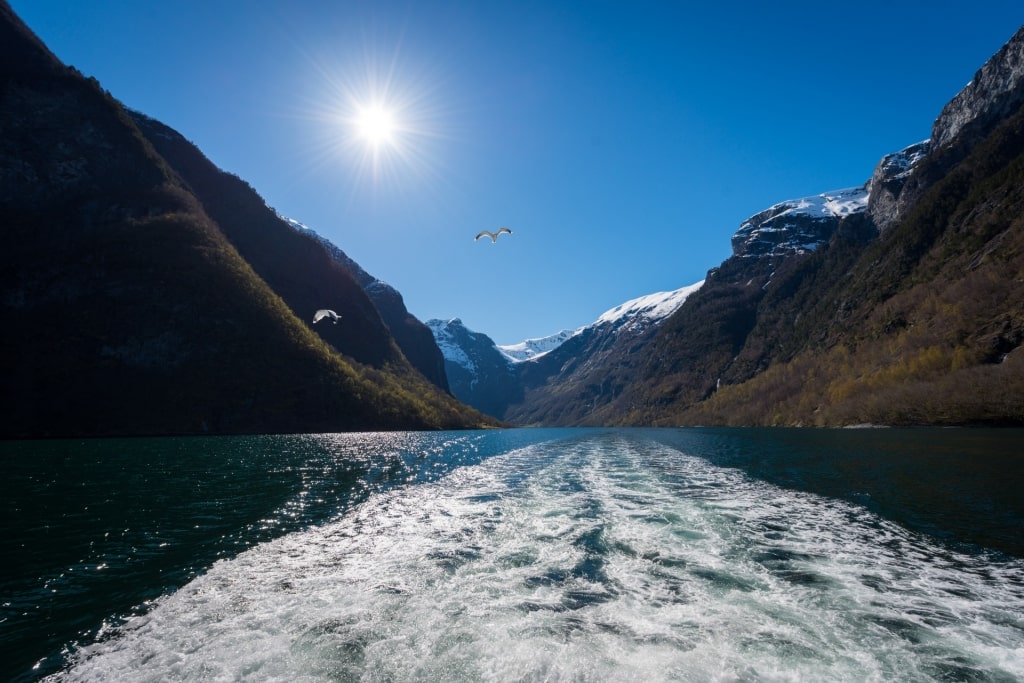
Naeroyfjord
When Is Low Season?
Unless you’re coming for winter sports and aurora-chasing, mid-winter is low season in Norway, mainly because it’s dark and cold.
If you do want to experience winter in Norway, early March is a good time to visit; the days are getting longer but there’s still snow on the ground for sports like dog sledding, and still plenty of chances to see the Northern Lights.
Discover this beautiful country on a cruise with Celebrity Cruises. Browse our Norway cruises and book your next adventure today.
